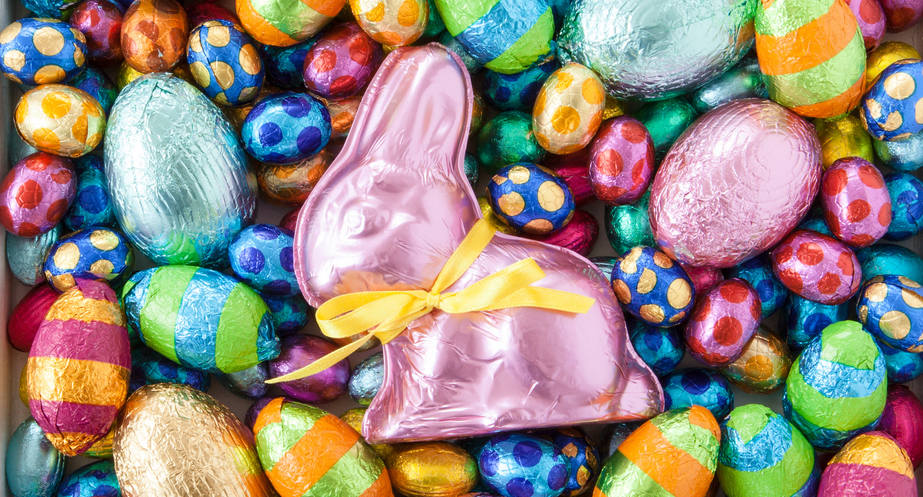

iStock
Easter candy is, arguably, the best candy. Sure, Halloween candy is delicious as well, but there’s something about the chocolate bunnies, colorful and sugary Peeps, egg-shaped Snickers bars, and jelly beans in every flavor you can imagine that just feels extra special. Plus, it doesn’t hurt that spring weather is awesome, and you can enjoy your candy while sitting outside. On top of that, you don’t have to walk around trick or treating to get your treats. You can get Easter candy in a nice little basket that’s simply waiting for you to eat everything. It’s pretty great.
Unfortunately, though, as wonderful as Easter candy is, it’s still candy… and that means it has its downsides. We hate to be the ones to break it to you, but candy is, uh, not healthy. It’s not good for you. It’s full of sugar and calories and it’s never going to be nutritious (and if it was, it just wouldn’t be the same, you know?). That’s all well and good and something that can easily be ignored, because we all deserve a treat sometimes. It’s when the candy starts to actually be destructive that it becomes a bit more concerning… and that can definitely happen.
Let’s start off with the good news, though: not all Easter candy is terrible for your teeth. Delish spoke to Dr. Anita Imadomwanyi from Aspen Dental, who said that chocolate is probably the least destructive for your teeth, since it dissolves quickly.
And if you’re eating dark chocolate, that’s even better. It has less sugar and can even contain compounds that fight off bacteria to actually prevent cavities. So, fill up on that dark chocolate.
That means you can probably eat a bunch of Peeps without worrying about doing too much damage.
One of the worst candies, though, is a hard sucking candy. That’s because sucking on the candy exposes your teeth to the sugar for a longer amount of time. Oh, and taffy and caramels, which take forever to chew, are also not ideal.
We’ll tell you anyway… it’s sour candy. Dr. Imadomwanyi says that these are the worst for our teeth because they are both acidic and sticky. All of that acidity can break down or weaken the enamel of teeth, making you more likely to get a cavity.
Me in the holiday candy aisle on Easter Monday: pic.twitter.com/5igHtDYJpI
— Samantha Powell (@sdpowell1) April 17, 2019
Burhenne had some tips on how to keep your teeth safe even while binging on candy. First of all, eat your candy with water. It will help neutralize the acids produced by the bacteria. You should also make sure to wash your mouth out with water after eating to get rid of the loose bits of candy that get stuck in your teeth.
He told AOL, “Frequent snacking on sugary sweets throughout the day will consistently expose teeth to sugar and create an acidic environment in the mouth, which can cause tooth decay.”
And while it might seem like you should brush your teeth immediately afterwards, you actually shouldn’t. Burhenne says to wait at least 30 minutes to an hour after eating the candy (depending on how much water you drank). He wrote, “Enamel is strong, but it wears away with acid, and brushing with all that acid in your mouth could easily wear away more enamel.”
Don’t avoid a treat you have once a year if it really makes you happy. It’s Easter, after all!
Don't just make desserts, make THE desserts of all time with fancy gadgets you're going…
Looking to spruce up your kitchen without breaking the bank? Don't worry! We've got some…
Move over, meat-and-cheese boards—there is a new charcuterie showstopper in town! It's these charcuterie tacos!…
Baking isn’t just about following a recipe, it’s about creating something warm, comforting, and joy-filled.…
Are you planning the ultimate group dinner for your girls? Whether you're hosting a cozy…
Looking for ways to make your day-to-day tasks less of a headache? We've rounded up…
This website uses cookies.